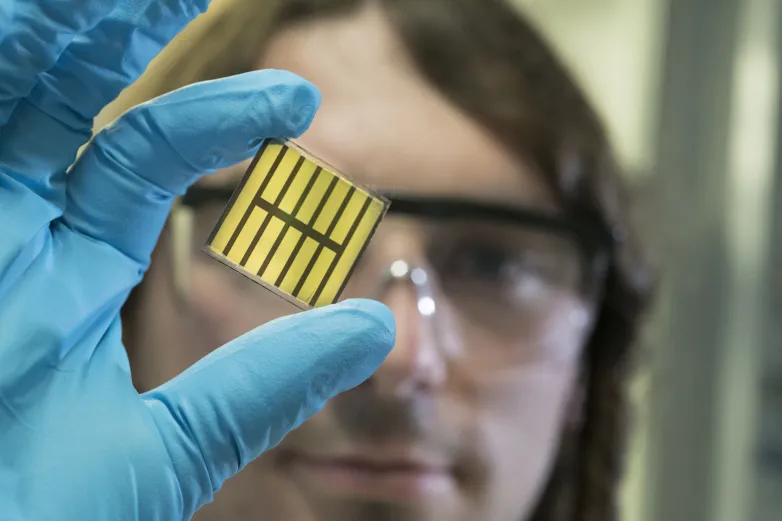German scientists team up for perovskite tandem cells
Sep 4, 2019 09:18 PM ET
- Two of Germany’s leading research institutes and a CIGS module maker have announced plans to work on the development of perovskite-CIGS tandem cells with a target of producing thin film modules with better than 30% efficiency.

German university the Karlsruhe Institute of Technology (KIT), the Center for Solar Energy and Hydrogen Research Baden-Würtetemburg (ZSW) and CIGS module manufacturer Nice Solar Energy have announced an ambition to design tandem PV modules based on CIGS and perovskite, which they say can theoretically achieve efficiencies well above 30%.
The joint ‘Capitano’ project will run for three years and has received more than €5 million from Germany’s Federal Ministry for Economic Affairs and Energy.
Within the project, ZSW will focus on developing CIGS modules tuned to particular absorption spectra in order to create the best synergy with a perovskite layer and to be able to trap as much of the light spectrum as possible. That will include optimizing intermediate and transparent contact layers between the two cells.
BIPV application
KIT’s input will focus on developing new materials and processes for the production of perovskite solar cells and modules and investigating scalable manufacturing techniques. The institute says it will particularly focus on slot casting and gas phase deposition methods. KIT will also develop a light management concept for the modules and take responsibility for yield calculations.
German-headquartered Nice Solar Energy will evaluate industrial scale production. The company will provide CIGS modules for the production of tandem products and will carry out cost comparisons versus single junction CIGS solar modules, based on a hypothetical production capacity of 300 MW.
“We are developing the next generation of highly efficient thin-film tandem solar modules with an efficiency of more than 30%,” said Ulrich W Paetzold, junior research group leader at KIT. “Promising fields of application are, for example, highly efficient solar modules for building-integrated photovoltaic [BIPV] solutions.”
As well as the potential for high efficiencies, CIGS-perovskite tandem devices offer the prospect of lightweight solar modules which are cheap to process. The current efficiency record for the technology stands at 24.6% and was set last September by Belgian research institute imec.
Also read

